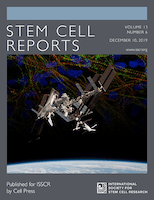
Stem Cell Reports
Scope & Guideline
Illuminating the Path of Stem Cell Exploration
Introduction
Aims and Scopes
- Stem Cell Biology and Dynamics:
The journal focuses on the fundamental biology of stem cells, including their self-renewal, differentiation, and the regulatory mechanisms involved. It often employs mathematical modeling and experimental techniques to elucidate these processes. - Innovative Therapeutic Applications:
There is a significant emphasis on translating stem cell research into clinical applications, particularly for regenerative medicine, including therapies for various diseases and conditions such as cardiac, orthopedic, and neurological disorders. - Interdisciplinary Approaches:
The journal promotes research that integrates various fields such as bioengineering, immunology, and computational biology to enhance the understanding and manipulation of stem cells for therapeutic purposes. - Ethical and Technical Frameworks:
Stem Cell Reports explores the ethical implications and technical advancements in fetal therapy and other stem cell applications, ensuring that research is conducted responsibly and with consideration for ethical standards. - Emerging Technologies in Stem Cell Research:
The journal highlights advancements in technologies such as 3D scaffolding, machine learning, and organoid development, which are pivotal in improving stem cell therapies and understanding their mechanisms.
Trending and Emerging
- Application of Machine Learning and Computational Modelling:
Recent papers emphasize the use of machine learning and quantitative modeling to analyze stem cell behavior and dynamics, reflecting a trend towards data-driven research methodologies that enhance predictive capabilities in stem cell applications. - Prenatal and Fetal Therapies:
There is a growing interest in prenatal therapies, particularly for congenital conditions, as evidenced by multiple recent publications. This trend underscores the potential of stem cell therapies to address developmental disorders early in life. - Immunomodulation and MSCs:
The immunomodulatory properties of mesenchymal stem cells (MSCs) are increasingly recognized, particularly in the context of treating inflammatory diseases and enhancing the efficacy of therapies, indicating a shift towards understanding immune interactions. - 3D Bioprinting and Scaffold Engineering:
Innovative approaches such as 3D bioprinting and engineered scaffolds are gaining prominence, showcasing their potential to optimize stem cell therapies and tissue engineering applications, further bridging the gap between basic research and clinical application. - COVID-19 Related Research:
The impact of the COVID-19 pandemic has led to a surge in research exploring the use of stem cells in treating related complications, particularly acute respiratory distress syndrome (ARDS), highlighting the adaptability of stem cell applications in response to global health challenges.
Declining or Waning
- Traditional Stem Cell Sources:
Research focusing exclusively on traditional stem cell sources, such as embryonic stem cells, has seen a decline in favor of more innovative approaches like induced pluripotent stem cells (iPSCs) and adult stem cells, which offer more ethical and practical advantages. - Basic Stem Cell Characterization Studies:
There is a noticeable decrease in papers solely dedicated to basic characterization of stem cells without direct application to therapeutic contexts. The trend is shifting towards studies that connect characterization with specific clinical applications. - Niche Microenvironment Studies:
While the role of stem cell microenvironments is crucial, there has been a waning interest in purely observational studies of niche interactions without integrating these findings into therapeutic strategies or technological advancements.
Similar Journals
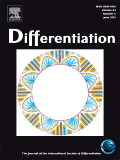
DIFFERENTIATION
Advancing the Frontiers of Cellular UnderstandingDIFFERENTIATION is a respected peer-reviewed journal published by Elsevier Science Ltd, dedicated to advancing knowledge in the fields of Cancer Research, Cell Biology, Developmental Biology, and Molecular Biology. With an established history since 1973, the journal continuously explores the intricacies of cellular and molecular processes that govern differentiation in biological systems, thus playing a pivotal role in shaping contemporary research directions. Currently indexed in the Q3 quartile across multiple relevant categories, it provides a crucial platform for researchers to disseminate their findings and engage with the scientific community. DIFFERENTIATION does not offer open access, but it remains a valuable resource for academics seeking to enhance their understanding of the fundamental mechanisms that underpin life sciences. By fostering a rigorous dialogue among scientists, it contributes significantly to the ever-evolving landscape of biochemistry and genetics.

Biomedical Research and Therapy
Advancing biomedical knowledge through innovative research.Biomedical Research and Therapy is a pioneering journal published by BIOMEDPRESS, dedicated to the field of biomedical sciences. With its ISSN 2198-4093, this journal aims to disseminate high-quality research and innovative therapies that advance knowledge in biomedical research. Although it operates on a non-open access model, it provides crucial insights into various topics such as drug discovery, disease mechanisms, regenerative medicine, and clinical applications. The journal's rigorous peer-review process ensures the publication of critical findings and methodologies, making it a vital resource for researchers, practitioners, and students interested in the constantly evolving landscape of biomedical research. With converged years from 2020 to 2024 and an emerging reputation in its field, Biomedical Research and Therapy is positioned to contribute significantly to the global scientific community, enriching the discourse around therapeutic advancements and biomedical innovations.
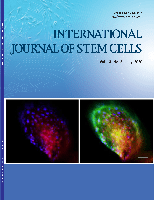
International Journal of Stem Cells
Connecting Researchers to Groundbreaking Stem Cell ScienceThe International Journal of Stem Cells is a distinguished peer-reviewed journal dedicated to advancing the field of stem cell research. Published by the Korean Society for Stem Cell Research, this journal has established itself as a vital source of high-quality research since its inception in 2008. Operating under the ISSN 2005-3606 and E-ISSN 2005-5447, the journal caters to a global audience, featuring works that span a diverse array of topics within Cell Biology and Developmental Biology. It is noteworthy that as of 2023, the journal is ranked Q3 in Cell Biology and Q2 in Developmental Biology, highlighting its growing influence and credibility in the scientific community. Given its commitment to facilitating open scientific communication, it is crucial for researchers, professionals, and students to engage with the rigorous research published in this journal as it profoundly impacts the understanding and application of stem cell science. With accessibility to a wealth of innovative studies, the International Journal of Stem Cells remains an indispensable resource for anyone interested in the transformative potential of stem cell research.

Stem Cell Research & Therapy
Pioneering Research in Regenerative TherapiesStem Cell Research & Therapy is an esteemed international journal published by BMC, specializing in the rapidly advancing fields of stem cell research and regenerative therapies. Since its inception in 2010, the journal has embraced an Open Access model, ensuring that vital research is readily accessible to a global audience. With a significant impact in the scientific community, it holds Q1 quartile rankings in prestigious categories such as Biochemistry, Genetics and Molecular Biology, Cell Biology, and Molecular Medicine, highlighting its critical role in promoting groundbreaking research. The journal’s high Scopus rankings—placing it in the top echelons of its fields—reflect its commitment to publishing high-quality, peer-reviewed studies that advance our understanding of stem cell biology and therapeutic applications. Aimed at researchers, healthcare professionals, and students alike, Stem Cell Research & Therapy is an indispensable resource for those dedicated to the exploration and innovation within this transformative area of science.
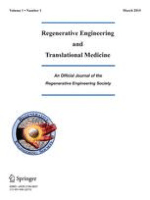
Regenerative Engineering and Translational Medicine
Connecting Academia and Industry for Medical BreakthroughsRegenerative Engineering and Translational Medicine is an esteemed academic journal published by Springer Heidelberg, focusing on the interdisciplinary fields of biomaterials, biomedical engineering, and cell biology. With an ISSN of 2364-4133 and an E-ISSN of 2364-4141, the journal has carved a niche for itself since its inception in 2015, showcasing cutting-edge research that bridges the gap between scientific findings and practical applications in regenerative medicine. As a recognized platform in its field, it is currently positioned within Q3 quartiles in biomaterials, biomedical engineering, and medicine (miscellaneous), with a Scopus ranking that reflects its growing influence among peers. The journal aims to disseminate high-quality, peer-reviewed articles that highlight advancements in regenerative engineering, further advancing both theoretical and applied research. Scholars and practitioners seeking to stay at the forefront of the ever-evolving landscape of regenerative health solutions will find invaluable insights and innovations within these pages. Join a community of leading thinkers and explore the journal's comprehensive research contributions, which are crucial for fostering partnerships between academia and industry in the quest for transformative medical solutions.
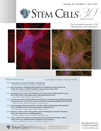
STEM CELLS
Exploring breakthroughs in cell and developmental biology.STEM CELLS, published by Oxford University Press, is a leading academic journal dedicated to advancing the field of cell and developmental biology. With an impressive impact factor and ranking in the Q1 and Q2 quartiles across various disciplines, including Developmental Biology and Molecular Medicine, this journal serves as a critical platform for disseminating cutting-edge research findings from 1981 to the present. The journal's rigorous peer-review process ensures the highest quality of published content, making it an essential resource for researchers, healthcare professionals, and students interested in the latest breakthroughs in stem cell research and its applications. With a focus on innovative methodologies and holistic perspectives, STEM CELLS not only highlights significant discoveries but also fosters a collaborative exchange of ideas, driving forward the frontiers of science in regenerative medicine and developmental studies.

Stem Cells International
Fostering Collaboration in Cutting-edge Stem Cell ResearchStem Cells International is a premier open access journal published by HINDAWI LTD, focusing on the rapidly evolving field of stem cell research. With an ISSN of 1687-966X and E-ISSN 1687-9678, this journal has been a vital resource since its inception in 2010, showcasing innovative studies and breakthroughs up to 2024. Positioned in Q3 in Cell Biology and Q2 in Molecular Biology for 2023, as well as well-ranked in the Scopus database, the journal serves as an essential platform for researchers, professionals, and students dedicated to exploring the implications of stem cell technology in regenerative medicine and biological research. The open access model ensures wide accessibility, fostering collaboration and knowledge-sharing across the scientific community, making it a cornerstone in advancing the understanding and application of stem cell science.

Current Stem Cell Research & Therapy
Exploring Innovative Therapies for Tomorrow's MedicineCurrent Stem Cell Research & Therapy, published by Bentham Science Publishers Ltd, is a leading journal dedicated to advancing the field of stem cell research. With an ISSN of 1574-888X and an E-ISSN of 2212-3946, this journal has been a valuable resource since its inception in 2006 and continues to broaden its scope through 2024. Recognized in the Q2 quartile for Medicine (miscellaneous) and ranked in the 66th percentile among its peers, the journal plays a crucial role in disseminating high-quality, peer-reviewed research that explores both the therapeutic and biological implications of stem cells. Located in the United Arab Emirates, Current Stem Cell Research & Therapy embraces a global audience of researchers, professionals, and students, providing a vibrant platform for discourse and innovation. While the journal offers subscription-based access, it remains committed to enhancing the scientific community's understanding of stem cell therapy and its applications across various medical fields.
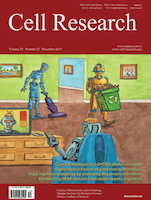
CELL RESEARCH
Exploring Innovations in Molecular BiologyCELL RESEARCH is a premier peer-reviewed journal dedicated to advancing the field of cell biology and molecular biology, published by SpringerNature. With an impressive impact factor and consistently ranking in the Q1 quartile for both cell biology and molecular biology, this journal serves as a pivotal resource for researchers, professionals, and students seeking to explore the latest discoveries and advancements in cellular mechanisms and their implications for health and disease. Since its inception in 1996, CELL RESEARCH has cultivated a distinguished reputation, currently boasting ranks in the top percentile of Scopus categories, reaffirming its influence and relevance to the scientific community. Although it is not an Open Access journal, its rigorous selection process ensures the publication of high-quality articles that contribute significantly to our understanding of life sciences. For those deeply engaged in the realms of biochemistry, genetics, and molecular biology, CELL RESEARCH is an essential conduit of innovative research and critical insights.
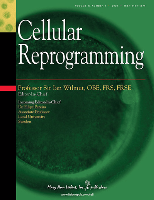
Cellular Reprogramming
Connecting Scientists to Shape Regenerative MedicineCellular Reprogramming is a prominent academic journal published by MARY ANN LIEBERT, INC, dedicated to advancing the field of cellular biology and biotechnology. With its ISSN 2152-4971 and E-ISSN 2152-4998, this journal provides an innovative platform for researchers and professionals to share groundbreaking research findings on cellular reprogramming, stem cell biology, and regenerative medicine. Established in 2010, and actively publishing until 2024, the journal is recognized for its contributions, evidenced by its categorizations in the Q3 and Q4 quartiles across several related fields, including biotechnology and developmental biology. This peer-reviewed journal not only supports open access to scientific literature but also aims to enhance interdisciplinary collaboration among scientists. With a growing impact in the realms of biochemistry, genetics, and molecular biology, Cellular Reprogramming remains an essential resource for the dissemination of pioneering research that could shape the future of cellular therapies.